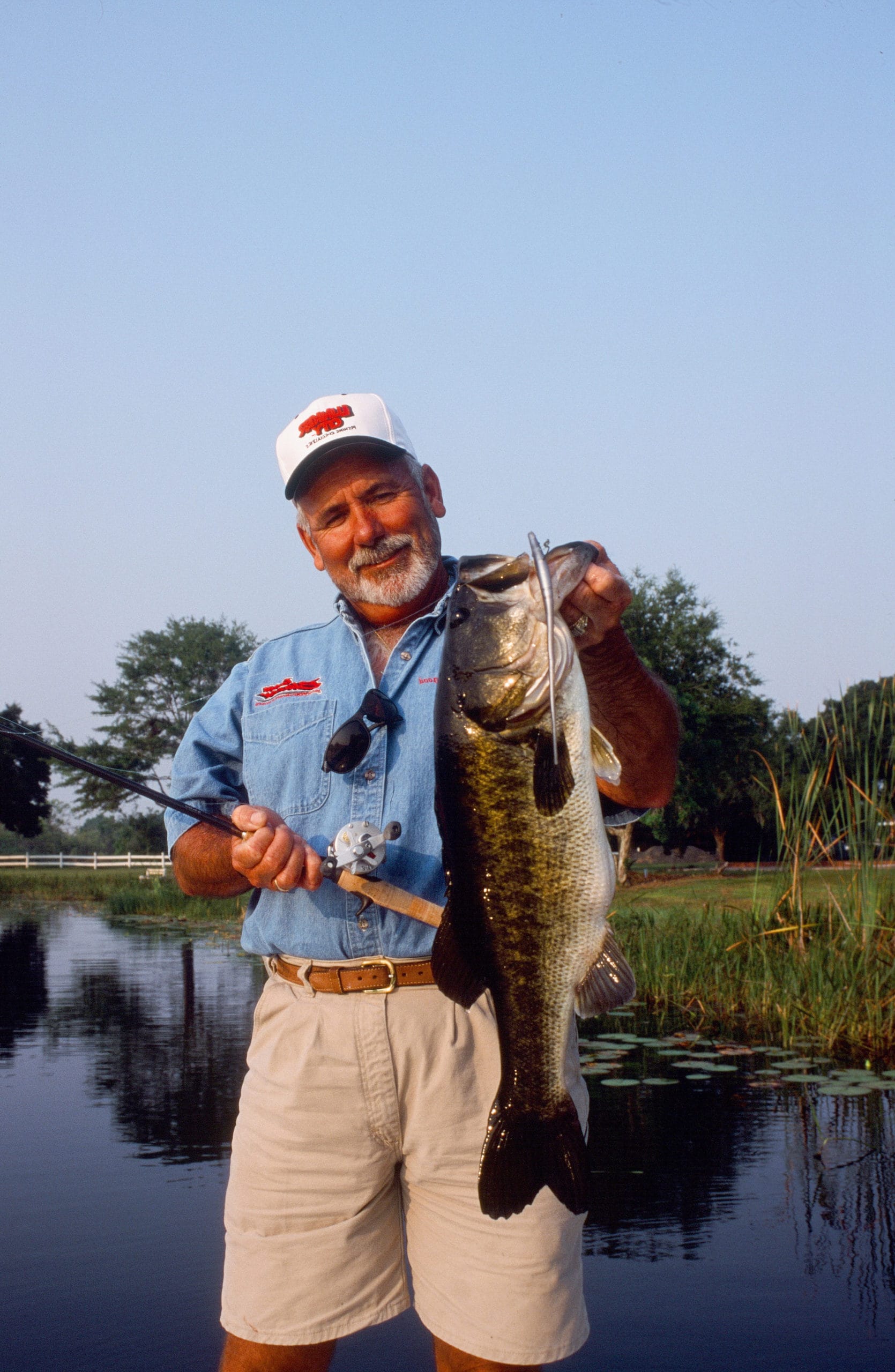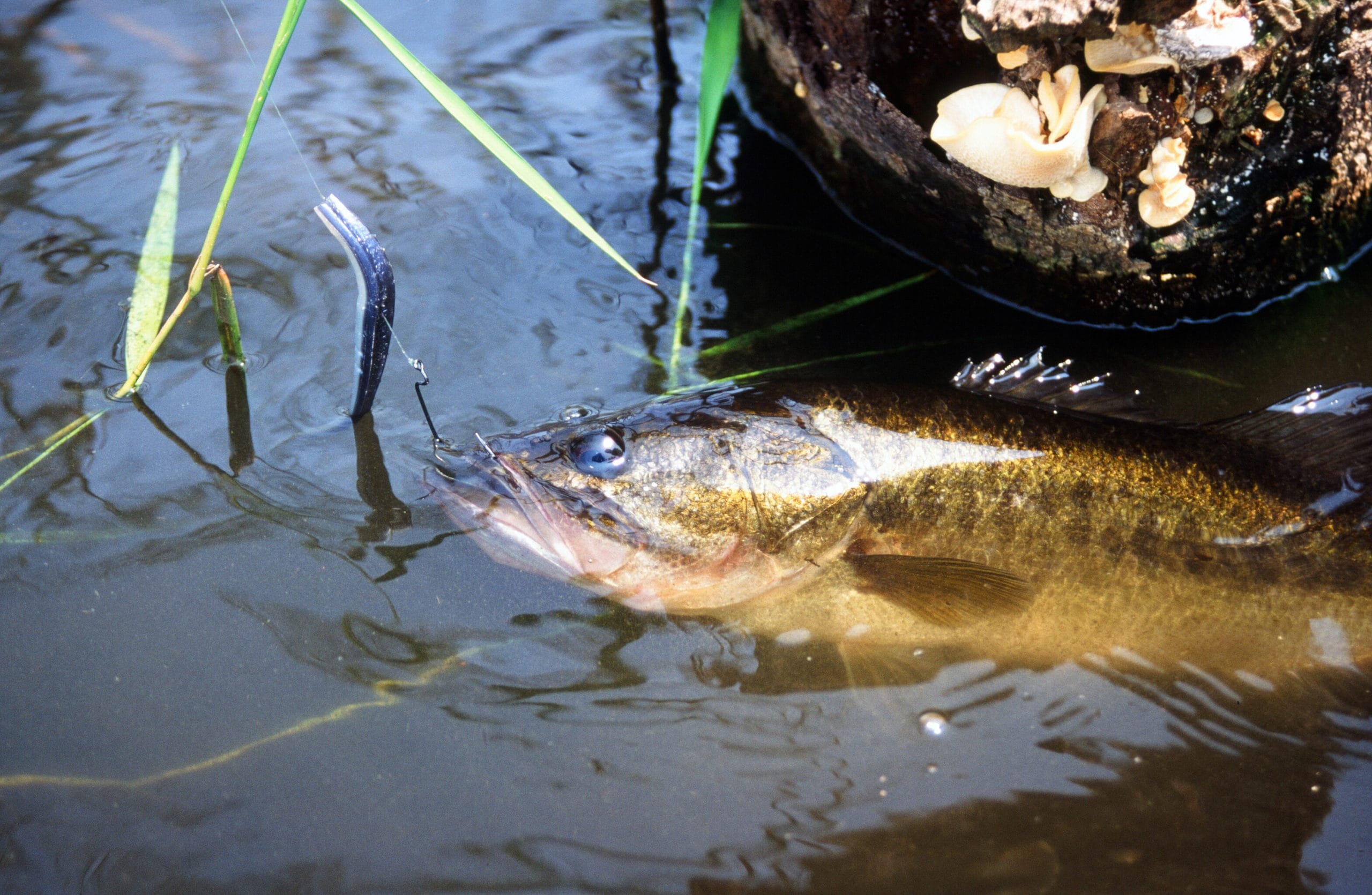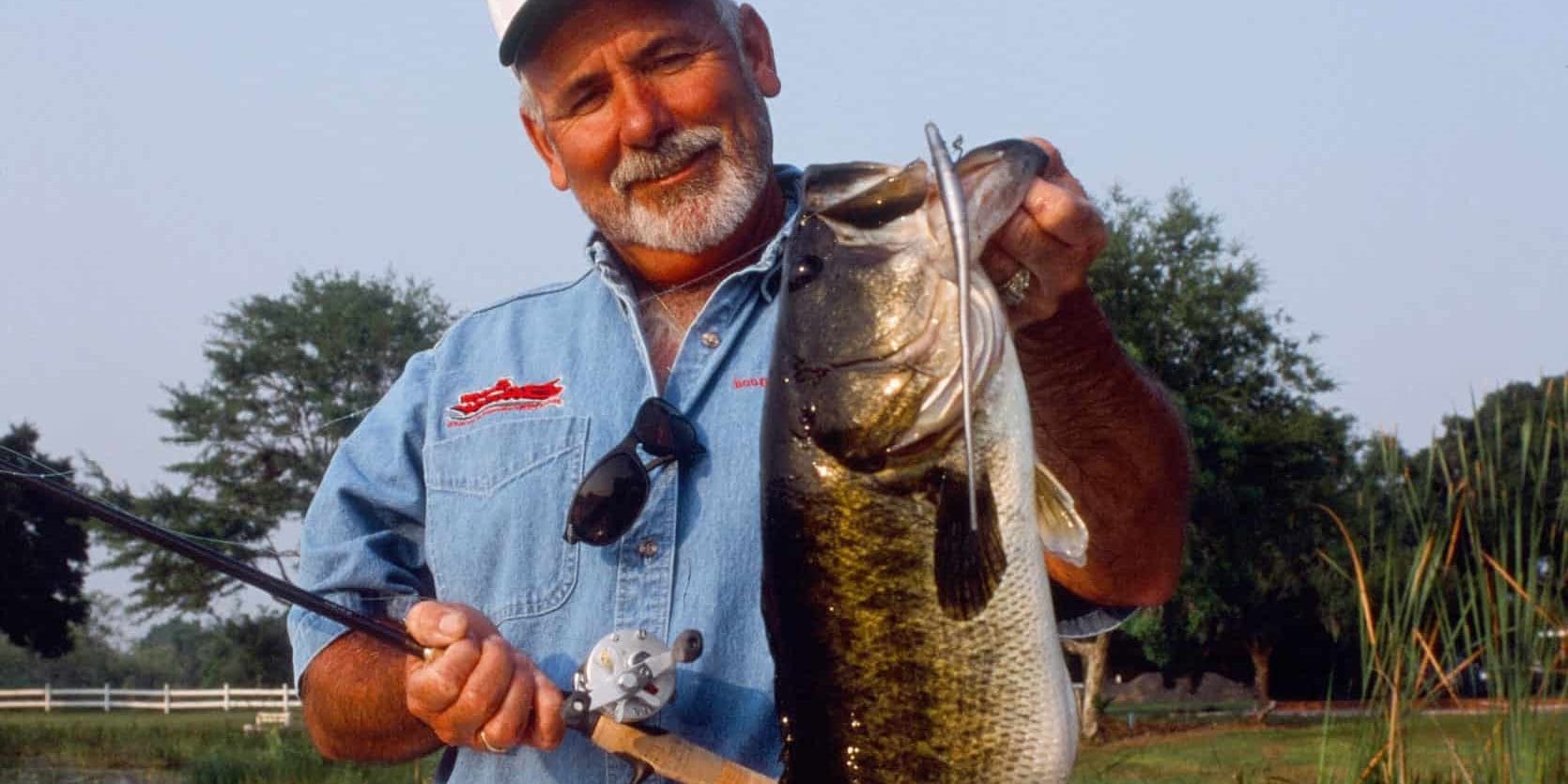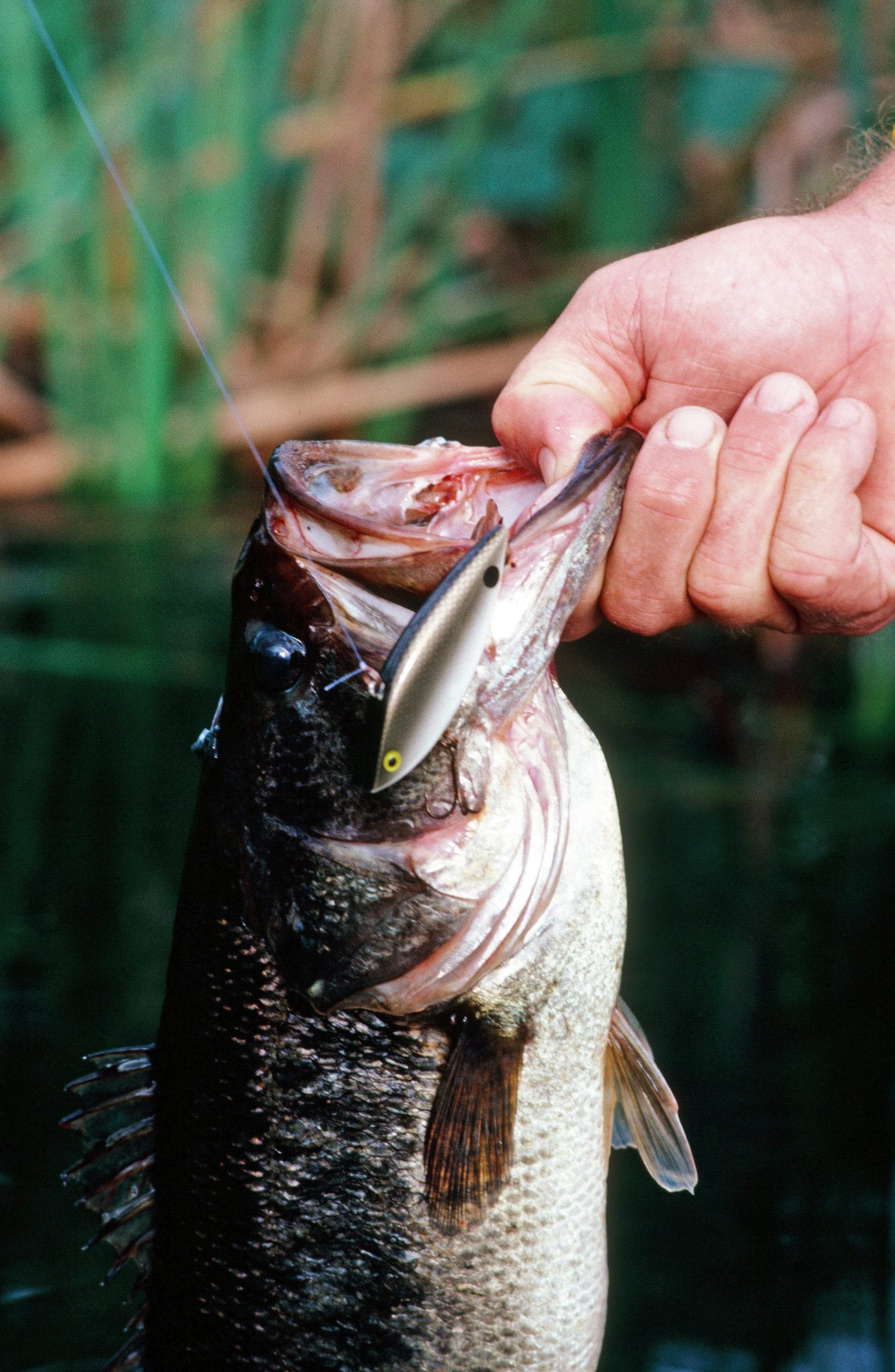by Bob McNally
Pre-spawn bass can be difficult to pattern and catch. Fish are transitioning from winter to spring holding areas—here one day, there the next. But for anglers who understand subtle nuances of water, structure and tackle techniques, it is possible to consistently score big on heavy pre-spawn fish. In fact, armed with the right knowledge, the pre-spawn staging period can produce some the best bass fishing of the year.

Some of the biggest bass of the year are caught during the pre-spawn by anglers who know the right tips for success.
Humps Are Key Staging Areas With Jonathan Newton
Some of the best pre-spawn bass action Alabama pro Jonathan Newton finds is around submerged humps near well-known bass bedding areas like creeks, coves and broad flats in sheltered shoreline areas.
But not all humps are the same. A good pre-spawn hump can be up to a half-mile away from a likely bass bedding area. That’s because when conditions become perfect, bass move great distances quickly. Some humps are connected to shoreline areas; others are far out in open water.
An ideal hump tops out at 12 to 14 feet of water, with 20 feet of water or more surrounding it. It should have a hard bottom consisting of shell, gravel or rock. Soft-bottom humps sometimes hold bass, but hard bottom is best. The best humps are small ones other anglers overlook. They only may be 20 feet across the top—about the size of the average dining room at a home. And a dining room is a good comparison, because that’s what a pre-spawn hump is to schools of staging bass.
Not every hump is consistently good for pre-spawners. It may be great one year, poor the next.
Timing is crucial for pre-spawn bass on humps. Water temperature should be in the upper 50 to low 60s, and there should be an abundance of baitfish in the immediate area of a hump.
Greg Pugh’s Best Lures For Pre-Spawn Bass Pre-spawn bass are aggressive, according to pro Greg Pugh. He fishes “searching lures” to locate bass by drawing reaction bites. Greg prefers isolated cover in creeks and pocket water off main lakes, and he prefers working lures along bottom breaks that quickly jump from 5 feet to 2 or 3 feet deep.
“Usually I’ll work a spinnerbait, swimming jig, lipless crankbait or buzzbait, depending on the weather, water conditions, and what bass tell me they want on that particular day,” says the Alabama angler.
The four pre-spawn lures Greg prefers for this style shallow-water fishing are:
No. 1: Tandem-blade spinnerbaits in 3/8- or ½-ounce sizes with a chartreuse-and-white skirt. He like a size 3 or 4.5 gold willowleaf blade paired with a size 4 Colorado blade.
No. 2: Swimming jigs in ½-ounce, white, black, or blue with a white trailer, or a plain dark color. Greg fishes these weedless, bullet-head jigs in visible brush in 3 feet of water or less.
No. 3: Greg like lipless crankbaits, especially after a spring cold front. He burns the retrieve. It’s a fast way to cover a lot of water to locate schools of pre-spawn bass.
No. 4: Buzzbaits are a great warm weather, pre-spawn bass weapon, Greg says. When fish are up cruising and feeding in spring, a buzzbait is hard to beat.
Brett Hite Targets Secondary Points
Brett Hite loves the pre-spawn. When he pinpoints a hot spot like a secondary point, he knows it can hold an incredible number of good-size staging bass.

Wood structure can be an important pre-spawn bass location, according to veteran tourney pro Ron Shuffield.
“So when you locate a good secondary point, you’re getting fish moving in—and moving out—of the shallows all the time. And that can last for weeks.”
Brett defines a secondary point as a “bump” off the bank in a main cove or feeder creek off a main lake, and well away from larger, more discernable primary points where a creek enters the main lake.
“Structure fishing is easy now because of maps on sonar,” he says. “So I want a secondary point that’s not shown on a map, and I zigzag over a likely area with a Humminbird side-scanner sonar unit that gives an exacting picture of the bottom type I’m seeking.”
Rusty Salewske Works Stained Water For Consistency
Pro Rusty Salewske has earned a lot of money in tournaments during the pre-spawn period. His trick is to locate stained or off-color water for spring bass concentrations.
A stained water pattern often starts in the backs of creeks following rain, says the California native. Stained water entering the back of a creek is often warmer and it often brings food into the lake that attracts baitfish and bass.
Stained water can hold a lot more active bass because it maintains stable water temperature from suspended particles. Bass in stained water continue to feed and are aggressive because water temperatures are warmer or remain more constant than clear water.
Salewske said he likes to makes parallel casts to cover in areas near drop-offs in 6 feet of stained water. He wants to keep lures in the most productive strike zone throughout a retrieve. Parallel casts along a structure element produce far more bass than casts made perpendicular to it.
Lure speed is important in drawing strikes from pre-spawn bass, he said. Sometimes a moderate retrieve is best, other times a stop-and-go retrieve is most effective. As air and water temperatures rise, much faster retrieves around docks and brush piles in stained water may be needed to provoke strikes.
Ron Shuffield Focuses On Creek Channels With Cover
Long-time and well-respected Arkansas pro angler Ron Shuffield recommends that reservoir anglers look for pre-spawn bass staging and holding along flooded creek channel edges, especially those having at least 60-degree drop-offs. The best pre-spawn hot spots are often where creeks swing in close to a lake bank, often in long stretches of 100 yards or so.
While bass can hold along an entire creek channel edge, the very best spots usually are near the head and tail portions of a channel bend.
Flooded timber can be important to this deadly pre-spawn bass pattern. In clear water, look for tops of trees down 5 to 10 feet, because bass may suspend in flooded timber clusters along creek channel edges near banks. Bass also may prefer chunk-rock areas near flooded timber creek channel edges, in depths from 25 to 45 feet.
The Union Sportsmen’s Alliance website is designed to provide valuable articles about hunting, fishing and conservation for members of AFL-CIO affiliated labor unions and all sportsmen and sportswomen who appreciate hunting and fishing and want to preserve our outdoor heritage for future generations. If you would like your own story and experience from the outdoors to be considered for our website, please email us at [email protected].









